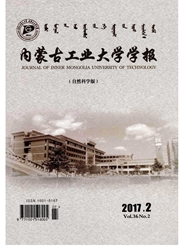

 中文摘要:
中文摘要:
继Warner(1965)等提出敏感问题的二值回答随机化装置之后,Franklin(1989)提出了一种非二值回答模型,Singh and Chen(2009)对其进行了改进,提出一种高阶扰动变量的随机化回答装置。若仅以方差作为比较尺度,Franklin(1989)模型和Singh and Chen(2009)模型已被证明是一类高效的模型,但是影响被调查者合作程度的随机化装置的保护度并没有考虑。本文从效率和保护度两个方面对其进行比较。首先扩展了闫在在,聂赞坎(2008)提出的保护度定义,然后采用数值计算在相同保护度下对几种随机化模型的效率作比较分析。得到的结论是改进后的模型并不是无条件最优的,其效率的改进是以牺牲保护度为代价,不利于敏感问题调查获取真实数据信息。
 英文摘要:
英文摘要:
After the methods of two-valued randomize model,which was set up by Warner(1965)atc.,Singh and Chen(2009)introduced a new kind of model,which make sense from the non-twovalued randomize model that proposed by Franklin(1989),making use of higher order moments of the scrambling variable.The model Franklin(1989),Singh and Chen(2009)introduced proving to be much more effective than the former model of two-valued randomize,if only take variances into consideration.However,the degree of confidentiality which will influence the respondents' cooperation is not included.In this paper,we make comparisons both from the efficiency and the degree of confidentiality.First of all,we extend the definition of the degree of confidentiality,introduced by Yan and Nie(2008),and make comparisons under same confidential degree making use of numerical calculation,and finally come to a conclusion that the result is not optimal unconditionally.The improvement of the efficiency at the expense of the privacy protection,is not conducive to get real data information in sensitive question surveys.
 同期刊论文项目
同期刊论文项目
 同项目期刊论文
同项目期刊论文
 Bayesian Estimation for Generalized Exponential Distribution Based on Progressive Type-I Interval Ce
Bayesian Estimation for Generalized Exponential Distribution Based on Progressive Type-I Interval Ce An Approximate Bayesian Estimation for generalized exponential distribution based on Progressive Typ
An Approximate Bayesian Estimation for generalized exponential distribution based on Progressive Typ 期刊信息
期刊信息
